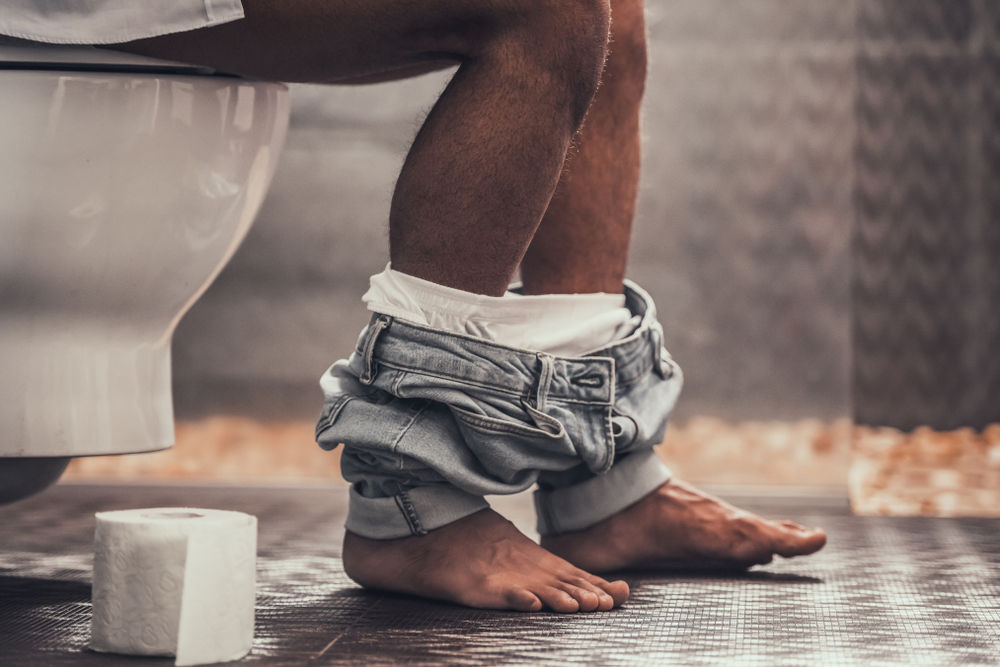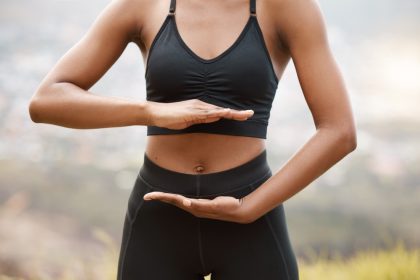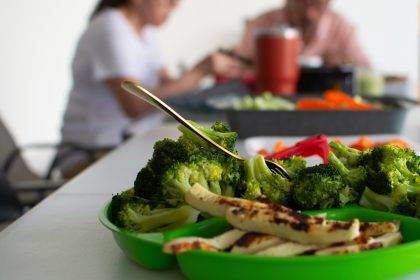Constipation affects nearly everyone at some point, yet many sufferers cycle through ineffective remedies while enduring unnecessary discomfort. Behind this common complaint lies a complex interplay of dietary habits, lifestyle factors, and physiological mechanisms that must be addressed systematically. While occasional constipation resolves naturally, persistent cases demand targeted intervention to restore proper digestive function. This comprehensive guide examines evidence-based approaches to constipation relief, explaining the biological mechanisms behind each solution and providing practical implementation strategies.
Hydration reactivates the colon
Proper hydration serves as the foundation for healthy bowel function, yet remains overlooked in many constipation treatments. Water deficiency directly impacts stool consistency through several biological pathways. When the body senses inadequate hydration, it activates water conservation mechanisms that extract excessive moisture from digestive waste, creating abnormally firm stools that resist normal passage.
The large intestine depends on adequate fluid to maintain the mucus layer lining the colon walls. This slippery barrier facilitates smooth stool movement through the digestive tract. Dehydration compromises this protective layer, increasing friction between stool and intestinal surfaces and dramatically slowing transit time.
For effective constipation relief, water consumption must reach specific thresholds to overcome these mechanisms. The minimum effective intake starts at 64 ounces (approximately 2 liters) daily for average-sized adults in temperate climates, with adjustments needed for body weight, activity level, and environmental conditions. Spacing this intake throughout the day maximizes absorption and effectiveness.
Warm liquids provide enhanced benefits through temperature-induced intestinal contraction. A glass of warm water with fresh lemon juice first thing in the morning stimulates the gastrocolic reflex—the natural wave of intestinal contractions triggered by stomach activity. This morning ritual often produces a bowel movement within 30-60 minutes through purely physiological means.
Soluble fiber creates movement mechanics
Dietary fiber exists in two distinct categories with dramatically different effects on constipation. Soluble fiber—found in oats, barley, citrus fruits, apples, and legumes—dissolves in water to form a gel-like substance that softens stool and facilitates passage. This form proves particularly effective for constipation relief through several concurrent mechanisms.
The gel formed by soluble fiber increases stool bulk while maintaining softness, creating the ideal consistency for smooth passage through the intestinal tract. This contrasts with insoluble fiber (found in wheat bran and many vegetables), which adds bulk but sometimes worsens constipation when adequate hydration is lacking.
Soluble fiber serves as a prebiotic—a food source for beneficial gut bacteria that produce short-chain fatty acids through fermentation. These fatty acids stimulate intestinal contractions and increase water retention in the stool, further enhancing movement through the digestive tract.
For constipation relief, gradually increasing soluble fiber intake prevents the bloating and gas that can occur with sudden increases. Starting with 3-5 grams daily and slowly progressing to 25-30 grams provides the most comfortable transition. Concentrated sources like psyllium husk mixed thoroughly in water offer a convenient supplement when dietary sources alone prove insufficient.
Magnesium relaxes intestinal muscles
Magnesium deficiency contributes significantly to constipation prevalence, with modern diets frequently providing inadequate amounts of this essential mineral. Magnesium plays a crucial role in neuromuscular function throughout the body, including the intestinal muscles responsible for peristalsis—the wavelike contractions that move digestive contents forward.
When magnesium levels fall below optimal thresholds, intestinal muscles cannot properly relax between contractions, creating uncoordinated movement patterns that slow transit time. Supplemental magnesium addresses this deficiency directly, restoring proper muscle function and reestablishing normal bowel rhythms.
Different magnesium forms offer varying effectiveness for constipation relief. Magnesium citrate and magnesium glycinate provide the most bioavailable options for intestinal relaxation, while magnesium oxide tends to draw water into the intestines for more pronounced laxative effects. For ongoing maintenance, magnesium-rich foods including dark leafy greens, nuts, seeds, and whole grains help prevent recurrence.
For acute constipation relief, a single 300-400mg dose of magnesium citrate often produces results within 3-6 hours. For chronic cases, consistent supplementation with 200-300mg daily helps maintain proper intestinal function while addressing common deficiency. Timing supplementation before bedtime enhances effectiveness by working with the body’s natural circadian digestive patterns.
Movement stimulates peristalsis
Physical activity fundamentally alters intestinal function through multiple pathways, making exercise one of the most effective yet underutilized constipation remedies. Movement directly stimulates the enteric nervous system—the network of nerves controlling gut function—triggering increased peristaltic activity throughout the digestive tract.
Exercise also reduces transit time through mechanical means. The rhythmic bouncing and compression created during activities like walking, jogging, and rebounding massage the intestinal organs, physically moving contents forward. These mechanical forces work particularly well for dislodging impacted stool in the sigmoid colon—the final section before elimination where constipation most commonly occurs.
The increased breathing rate during exercise creates diaphragmatic movement that applies alternating pressure to the abdominal organs. This gentle pumping action stimulates sluggish intestines and improves blood flow to digestive tissues, enhancing overall function and waste elimination.
For immediate constipation relief, a brisk 20-30 minute walk often produces same-day results, particularly when performed after meals when the gastrocolic reflex naturally increases intestinal activity. For prevention, consistent daily movement proves more effective than occasional intense exercise, with studies showing as little as 30 minutes of moderate activity five times weekly significantly reduces constipation risk.
Squatting realigns the rectum
Toilet posture dramatically impacts elimination ease through simple anatomical mechanics that modern seated toilets disrupt. The puborectalis muscle creates a critical angle between the rectum and anal canal that prevents accidental elimination during normal activities. This angle remains partially closed in the seated position, requiring strained pushing to overcome.
The natural squatting position—with knees raised significantly higher than hips—straightens this anorectal angle completely, allowing for effortless and complete evacuation. This position relaxes the puborectalis muscle fully while simultaneously applying gentle pressure to the lower abdomen, creating ideal conditions for elimination without straining.
Modern bathroom adaptations like toilet footstools create a modified squatting position on standard toilets. By raising the knees to approximate the natural squat, these devices improve elimination by up to 71% according to clinical measurements of rectoanal angle and evacuation completeness.
For immediate constipation relief, improvised solutions like stacking books or boxes in front of the toilet to elevate the feet 8-12 inches can provide substantial benefit. The proper position places the knees notably higher than the hips, creating a 35° angle between the spine and upper legs. This positioning allows gravity to assist the process rather than working against natural anatomy.
Probiotic species restore function
The gut microbiome—the community of bacteria inhabiting the digestive tract—plays a fundamental role in regulating bowel function. Specific bacterial species directly influence constipation through several mechanisms, including stimulating intestinal movement, modifying stool consistency, and regulating the neural signals controlling elimination.
Not all probiotic supplements address constipation effectively, as different bacterial strains produce vastly different effects on intestinal function. Bifidobacterium lactis, Lactobacillus acidophilus, and Bifidobacterium longum demonstrate the strongest evidence for constipation relief, particularly when combined in multi-strain formulations that address multiple aspects of gut dysfunction simultaneously.
These beneficial bacteria produce short-chain fatty acids that nourish colon cells while stimulating proper contractions. They also help maintain the mucus layer lining the intestinal walls, reducing friction and facilitating smoother stool passage. Additionally, certain strains reduce inflammation that can slow transit time through the digestive tract.
For constipation relief, probiotic supplements containing 10-20 billion CFU (colony forming units) of these specific strains often produce improvements within 1-2 weeks of consistent use. Fermented foods like yogurt, kefir, sauerkraut, and kimchi provide natural probiotic sources but may not contain the specific strains with research-backed benefits for constipation.
Abdominal massage activates movement
Self-administered abdominal massage directly stimulates intestinal activity through both mechanical and neurological pathways. This technique works particularly well for constipation by physically moving stagnant intestinal contents while triggering the enteric nervous system to increase natural peristaltic waves.
The effectiveness comes from following the colon’s natural anatomy during the massage—starting on the lower right abdomen (ascending colon), moving upward to just under the ribs (transverse colon), and then downward on the left side (descending colon) in a clockwise pattern. This movement pattern physically encourages stool to follow its natural path toward elimination.
The pressure applied during massage stimulates stretch receptors in the intestinal walls that trigger the defecation reflex—the coordinated series of muscle contractions that facilitate bowel movements. This stimulation essentially “reminds” the digestive system of its natural function when normal signals have become blunted through chronic constipation.
For immediate relief, performing this massage for 10-15 minutes while applying moderate pressure often produces results within an hour, particularly when combined with adequate hydration. The technique works best when performed after waking or 30 minutes after meals when the digestive system is naturally most active.
Relaxation reduces inhibition
The brain-gut connection significantly influences constipation through stress-related mechanisms that many treatments overlook. The enteric nervous system maintains constant communication with the central nervous system, with stress signals directly inhibiting normal digestive function through several neurological and hormonal pathways.
Stress activates the sympathetic (“fight-or-flight”) nervous system, which suppresses digestive function as a biological priority-shifting mechanism. This activation constricts blood vessels supplying the intestines, tenses abdominal muscles, and reduces peristaltic contractions—creating ideal conditions for constipation development.
Deliberate activation of the parasympathetic (“rest-and-digest”) nervous system reverses these effects, increasing blood flow to digestive organs and reestablishing normal intestinal contractions. Deep diaphragmatic breathing—with extended exhales twice as long as inhales—provides one of the most immediate methods for triggering this parasympathetic dominance.
For constipation relief, practicing diaphragmatic breathing for 5-10 minutes before attempting bowel movements creates the physiological state most conducive to successful elimination. Progressive muscle relaxation focusing specifically on the abdominal and pelvic floor muscles further enhances this effect by reducing the physical tension that can inhibit normal elimination.
Understanding the multifaceted nature of constipation allows for targeted intervention that addresses the specific underlying causes in each case. While occasional constipation responds well to these natural approaches, persistent cases lasting more than two weeks deserve medical evaluation to rule out more serious conditions requiring different treatment approaches.
The most effective constipation relief typically combines several of these strategies simultaneously—addressing hydration, fiber intake, positioning, and stress reduction as an integrated approach rather than relying on any single intervention. This comprehensive methodology not only resolves current discomfort but establishes the foundational habits that prevent future occurrences.














